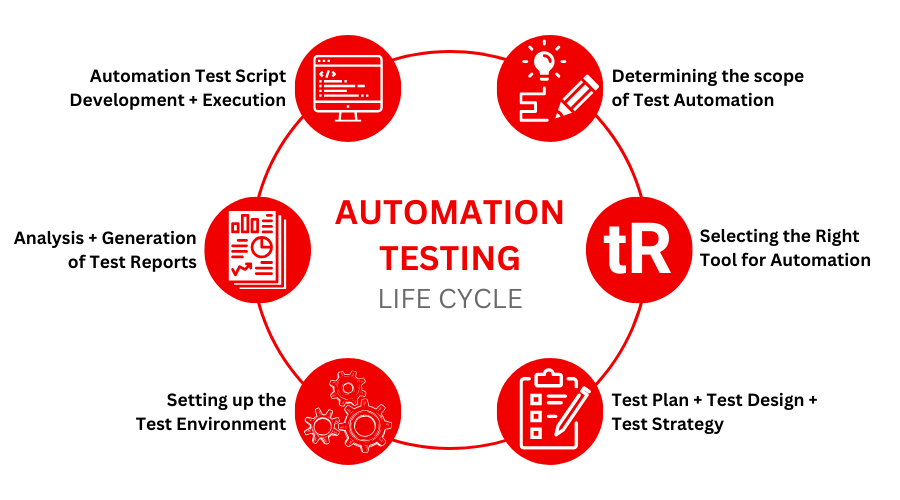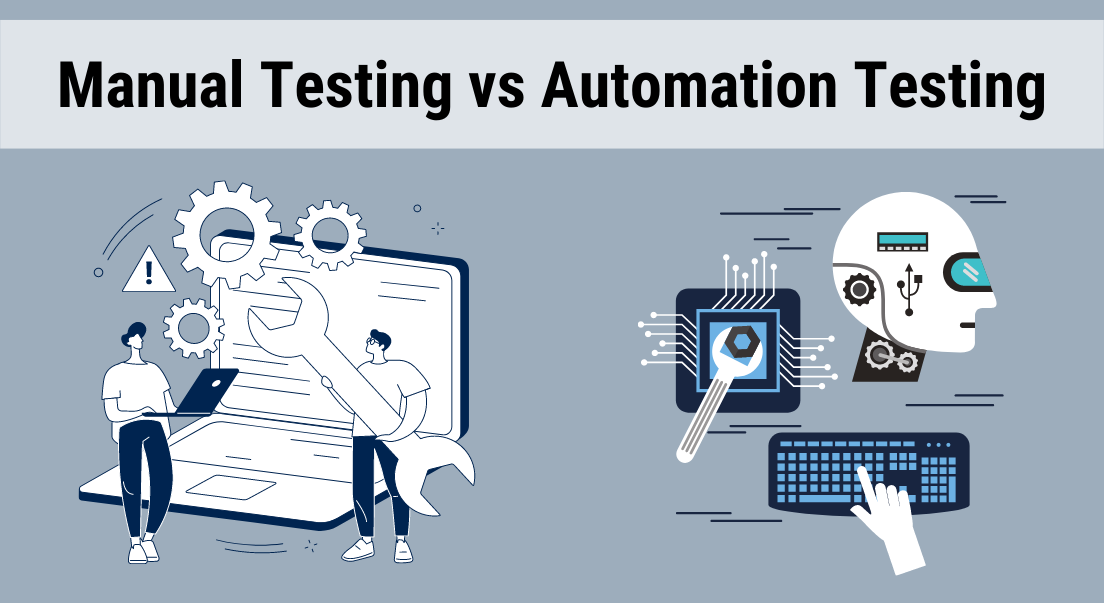Discovering the Future of Automation Testing in Software Development
Discovering the Future of Automation Testing in Software Development
Blog Article
From Guidebook to Automated Testing: A Comprehensive Guide to Transitioning Smoothly and Effectively
In the realm of software application screening, the shift from manual to automated processes has become a progressively important shift for organizations seeking to enhance performance and precision in their screening methods. As innovation continues to advancement, the demand for efficient and smooth automatic testing techniques has never ever been much more important. The journey from manual to automated screening is not without its obstacles, yet when come close to tactically and with a clear plan in mind, the advantages can be considerable - automation testing. In this extensive guide, we will certainly check out key actions and considerations vital for a successful change, from the preliminary choice of tools to the assimilation of automation right into existing workflows. Keep tuned to discover the insights that will certainly help pave the means for a smoother and more reliable screening process.
Benefits of Automated Examining
Automated screening supplies various benefits, improving performance and accuracy in software program advancement procedures. One primary benefit is the substantial decrease in testing time. Automated examinations can be run concurrently on numerous devices and running systems, considerably speeding up the testing stage contrasted to manual testing. This boosted performance permits faster responses on the high quality of the software program, allowing developers to identify and deal with concerns promptly.
In addition, automated screening guarantees a higher level of accuracy in spotting issues. Uniformity in testing is additionally enhanced, as automated tests execute the very same actions precisely each time they are run.
Picking the Right Devices

First of all, examine your demands and goals. Comprehend the range of your project, the technologies entailed, and the ability of your team. This analysis will help you identify the capabilities and features you call for in your screening devices.
Secondly, consider the compatibility of the devices with your existing procedures and systems. Smooth combination with your present software development lifecycle is vital to make certain a smooth shift to automation.
Furthermore, assess the scalability and flexibility of the tools. As your screening requires progress, the tools should be able to adapt and suit modifications efficiently.
Lastly, variable in the support and area around the tools. Robust assistance and an active individual community can offer beneficial sources and support when implementing automated screening. By carefully taking into consideration these elements, you can pick the right tools that line up with your requirements and established the stage for an effective transition to automated screening.
Composing Reliable Test Scripts

When crafting examination scripts, it is important to consider the certain requirements click for source of the software being checked and guarantee that the manuscripts attend to all crucial functionalities. Clear and descriptive calling conventions for test scripts and examination situations can boost readability and maintainability. Furthermore, including error handling devices within the test manuscripts can help in recognizing and attending to problems promptly.
Furthermore, arranging test manuscripts right into modular components can enhance reusability and scalability, decreasing redundancy and enhancing efficiency in examination manuscript maintenance. Regular evaluations and updates to examine manuscripts are important to maintain pace with developing software program needs and functionalities. By complying with these concepts, testers can develop durable and reliable test scripts that contribute substantially to the success of automated screening procedures.
Integrating Automation Into Workflows
Efficient integration of automation tools into existing workflows improves and simplifies procedures productivity within software application advancement cycles. When integrating automation right into operations, it is critical to identify repeated jobs that can be automated to conserve time and minimize human mistake. By effortlessly integrating automated screening devices like Selenium or Appium into the software application advancement lifecycle, teams can achieve faster comments on code modifications, bring about quicker insect detection and resolution. This integration permits continuous screening throughout the advancement process, important source guaranteeing that any issues are recognized early on, causing greater software quality. In addition, automation can be utilized to set off tests instantly after each code dedicate, providing prompt recognition and maximizing testers to concentrate on more complex circumstances. Appropriate integration of automation devices needs collaboration in between advancement, screening, and operations teams to develop a unified process that optimizes performance and efficiency in providing high-quality software program products.
Guaranteeing a Smooth Transition
Efficiently transitioning to automated testing entails thorough planning and cautious implementation to make best use of and minimize disruptions effectiveness in the software application advancement procedure - automation testing. To make certain a smooth transition, it is important to begin by performing a thorough assessment of the current testing processes and identifying areas where automation can bring the most significant benefits. Engaging with all stakeholders beforehand at the same time, consisting of programmers, testers, and job managers, is essential for garnering assistance and buy-in for the automation effort
Interaction is essential during this shift stage. Clear interaction of the goals, benefits, and assumptions of automated testing assists to manage any resistance or concerns that might emerge. Furthermore, giving ample training and sources for team members to upskill in automation tools and strategies is crucial for making sure a successful transition.

Final Thought
To conclude, transitioning from guidebook to automated screening supplies numerous advantages, including increased efficiency and dependability. By choosing the suitable tools, composing efficient examination scripts, and integrating automation effortlessly right into workflows, organizations can guarantee a successful and smooth transition. It is necessary to embrace look at here automation as an important asset in software testing procedures to boost total quality and performance.
In the realm of software program screening, the change from handbook to automated processes has actually come to be a progressively crucial transition for organizations looking for to improve efficiency and accuracy in their screening methods. Automated examinations can be run simultaneously on numerous gadgets and operating systems, significantly speeding up the screening stage compared to hand-operated screening. Consistency in screening is likewise improved, as automated examinations implement the very same steps precisely each time they are run.To make sure the successful execution of chosen testing devices, the development of reliable examination scripts plays an essential function in validating the performance and performance of automated procedures - automation testing. By complying with these principles, testers can produce robust and efficient test scripts that add substantially to the success of automated screening processes
Report this page